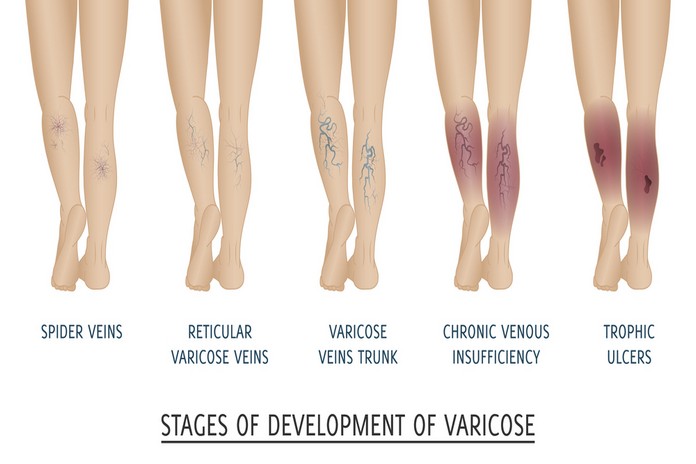Types of Spider Veins

There are three types of spider veins: reticular veins, telangiectatic veins, and varicose veins. (3)
Reticular veins
Reticular veins are a type of vein found close to the surface of the skin. They are thin and web-like, and can often be seen through the skin. Reticular veins are most commonly found on the legs, but can also be found on the arms, face, and other parts of the body. Reticular veins can sometimes be seen as blue or red lines on the skin.
Reticular veins are a different type of vein from superficial veins and deep veins. Superficial veins are closer to the surface of the skin than deep veins, and reticular veins are closer to the surface than superficial veins. Reticular veins are not as big as deep veins, but they are bigger than superficial veins.
Reticular veins usually do not cause any problems. However, in some cases they can become swollen and painful.
Varicose veins
Varicose veins are veins that become enlarged and twisted. The term varicose veins usually refers to the veins on the leg, although varicose veins can also occur in other parts of the body. These veins are larger and more visible than reticular veins. Varicose veins often occur on the legs and can cause pain, swelling, and a heavy feeling in the leg.
Varicose veins are caused by a weakening in the vein wall. This allows the vein to enlarge and twist as blood flows through it. Varicose veins can cause pain, swelling, and aching in the leg. They can also lead to skin ulcers and other complications.
Telangiectasia
Telangiectasia is a medical condition that is characterized by the presence of abnormally enlarged blood vessels, most commonly on the face. These blood vessels are often referred to as “spider veins” and can be quite noticeable and aesthetically displeasing. While telangiectasia generally does not cause any physical discomfort, it can be a source of psychological distress for some people. There is no known cure for telangiectasia, but there are treatments available that can help to minimize the appearance of the affected blood vessels.
